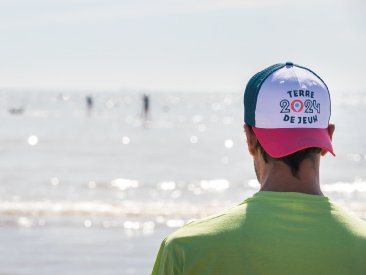events & legacy
Digital communications: Maximising fan engagement

Share this post
Sports cities – whether they are big or small – often act as event organisers when they host national or international events. As such, they must understand the importance of building an emotional connection with fans in order to boost fan engagement and ensure high engagement of sports, whether it be through attending events, consuming media or purchasing merchandise.
Although cities usually deliver quality events which satisfy both participants and spectators, they often do not maximise the event’s potential to engage with fans in a unique and innovative way. The extreme shift in fan behaviour that is happening, including new ways of watching and consuming sport, makes it challenging for cities to recognise fan changes, and adapt their content to fit fans’ expectations. With this in mind, many cities face difficulties in building a strong, lasting relationship with their fans.
The question is, how can cities develop a fan-centred strategy but maximises fan engagement before, during and after an event? Smart Cities and Sport explores this issue, putting forward key lessons for cities wanting to keep up with the evolution of fan behaviour and understand what is most likely to entertain them.
Today’s fan are tech-savvy and video driven
Even though the potential fan pool is bigger and wider than ever, many fans do not attend events and prefer to watch the games online. Being more tech-savvy and video-driven, fans are looking for ‘on the move’ consumption, making mobile devices their main method of sport consumption and forcing organisations to publish content 24/7. Social media has therefore become a critical avenue for sports organisations, not only for communications purposes, but also as a strategic lever with the opportunity for governing bodies to engage directly with fans worldwide. Even those fans that do attend the sports event themselves, are attracted more by the unique experience rather than the game itself, thereby offering continued opportunities for a technology-driven approach.
Four hints to create unique and captivating content :
1. Consider different types of fans
Considering the various demographics of sports fans will help cities to build a tailored and comprehensive fan strategy that doesn’t exclude an important group. Cities can certainly spread the same visual assets of their sports across diverse groups of people, but this should always be optimised in native channels (including the language, where appropriate). Moreover, identifying the various channels that your target audience uses will ensure your message is successfully aligned. For example, a bigger proportion of young people watch video content with the sound off and videos should therefore be adapted accordingly.
2. Create attention grabbing content
Publishing content outside of your hosted events, including special ‘behind-the-scenes stories’, has proven to be an effective tool for cities looking for greater fan engagement. In most cases, the first 3 to 6 seconds determine whether your fan is going to watch your content until the end. Picking the right stories with catchy headlines is particularly important to grab the audience’s attention quickly as well as promoting the relevant athletes directly.
3. Build a storyline of moments
Audiences do not live their lives according to cities’ predefined schedules. Rather, they are likely to keep coming back and re-engaging with it, but only if regular content is provided that ticks the right boxes. By creating a storyline of moments, with a clear theme, cities can ensure that, no matter when the content is consumed, it will maintain interest and help to ensure that a strong, lasting relationship can be created.
4. Take risks
It is important for cities are bold enough to come up with different pieces of content in order to see what is effective and what is not. As mentioned, fan behaviour is constantly changing and there is no guarantee that what works today will work tomorrow. Cities must therefore be confident in taking risks, in order to ensure that their methods of communicating are aligned with the ever-changing fan behaviour.
These are just some of the smart moves that cities, as event organisers, can take to deepen their relationship with fans in the long term. Being “smart about the channels you use and clever about the story you tell” is the key to the success of a fan-centred strategy.


